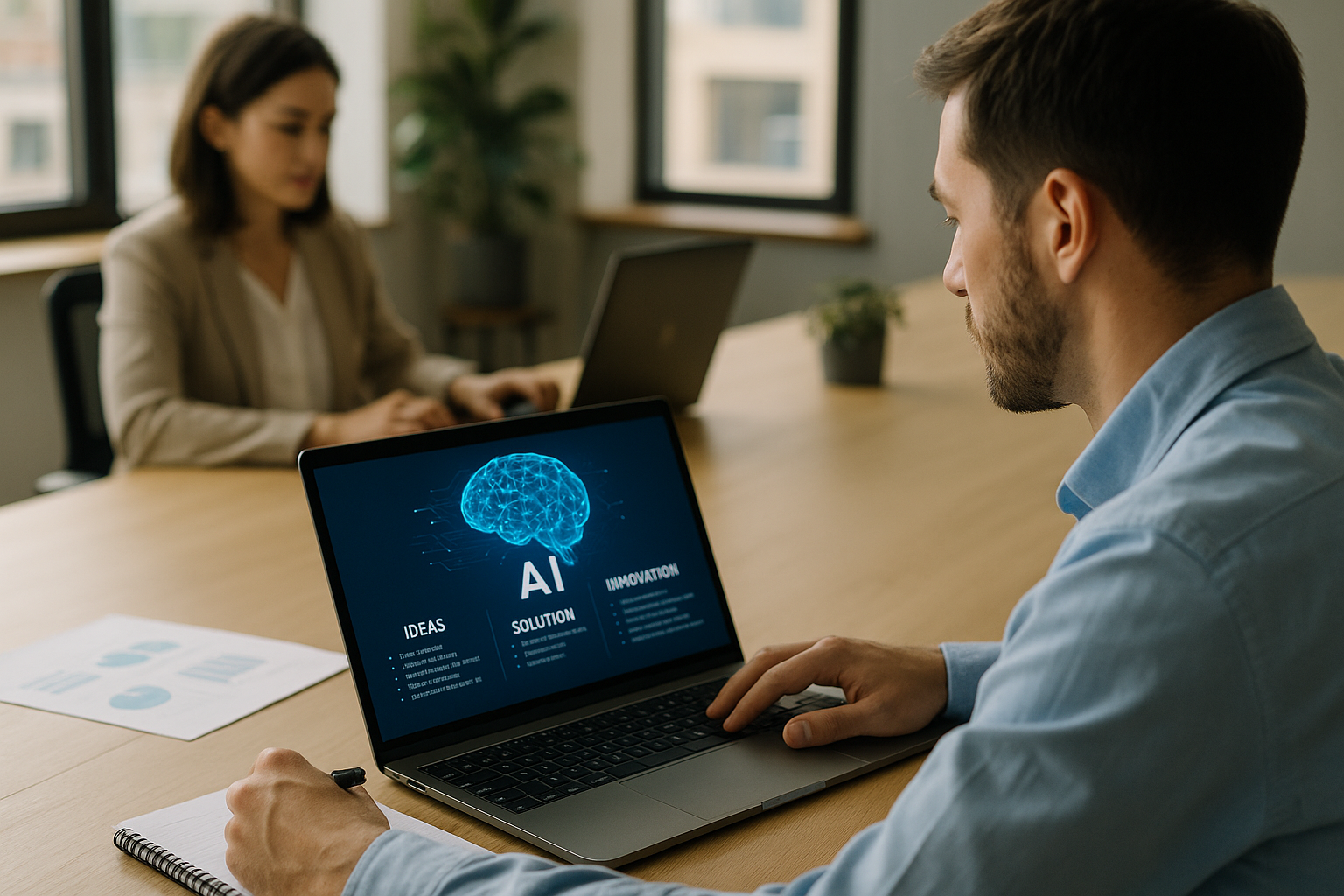How AI transforms operational efficiency and creative strategy
AI’s data-driven suggestions served as a springboard for brainstorming sessions, complementing the creative skills of human teams rather than replacing them. The study highlights that this human–AI synergy enhanced the company’s adaptability in a competitive market. It also underscores that innovation driven by AI is most impactful when paired with human intuition and domain expertise, which provide the context and judgment required to convert raw data into actionable strategies.

A new study reveals how artificial intelligence (AI) can transform business problem-solving and drive innovation when combined with human expertise. The research, titled “Enhancing Problem-Solving Skills with AI: A Case Study on Innovation and Creativity in a Business Setting,” was published in Administrative Sciences. It highlights both the opportunities and limits of AI adoption in real-world business environments, underscoring that technology’s value depends on thoughtful integration into human decision-making processes.
Focusing on a medium-sized tech startup that adopted machine learning, predictive analytics, and AI-powered chatbots, the study offers practical insights into how companies can use AI to streamline operations, stimulate creativity, and improve performance while maintaining essential human oversight.
How AI Transforms Business Problem-Solving
The first question addressed by the study examines how AI tools reshape operational problem-solving in business contexts. Based on interviews with ten employees, including founders, managers, and frontline staff, the authors found that the startup achieved significant gains in efficiency by automating routine tasks and leveraging data for rapid decision-making.
AI-powered predictive analytics improved demand forecasting and inventory management, reportedly leading to a 15% reduction in supply chain costs. Chatbots managed around 80% of routine customer interactions, enabling customer service teams to focus on complex queries. These operational gains highlight how AI can help companies address persistent challenges in resource allocation, workflow management, and client engagement.
However, the study notes that AI’s effectiveness hinges on the availability of quality data. Inaccurate or incomplete datasets led to errors in forecasting and customer profiling. Employees emphasized that while AI delivered useful recommendations, its outputs often required contextual interpretation to avoid misguided actions. This finding underscores that AI excels at pattern recognition but struggles with the nuanced understanding of human-centered situations.
AI as a catalyst for innovation and creativity
The research explores AI’s role in fostering innovation and creative thinking in business settings. The study found that AI-generated insights often challenged employees’ assumptions, opening up new approaches to product development and customer engagement. For example, the company used AI to identify emerging market trends, inspiring the launch of a gamified customer loyalty program and dynamic content strategies that resonated more effectively with target audiences.
AI’s data-driven suggestions served as a springboard for brainstorming sessions, complementing the creative skills of human teams rather than replacing them. The study highlights that this human–AI synergy enhanced the company’s adaptability in a competitive market. It also underscores that innovation driven by AI is most impactful when paired with human intuition and domain expertise, which provide the context and judgment required to convert raw data into actionable strategies.
Despite these advantages, the research cautions against over-reliance on algorithmic outputs, noting that creative breakthroughs often come from human insights that go beyond data trends. Employees reported that while AI could reveal opportunities, its suggestions occasionally lacked relevance or were constrained by historical patterns in the data.
Balancing AI adoption with human oversight
The third key question explored by the study centers on the challenges and prerequisites for integrating AI into business problem-solving and innovation processes. The authors stress that the transformative potential of AI cannot be realized without deliberate strategies to ensure collaboration between technology and human judgment.
The research recommends that businesses start with pilot projects to test AI applications in specific areas before scaling up. This approach allows teams to learn how to interpret AI-generated outputs, identify limitations, and fine-tune integration into workflows. Training programs are highlighted as critical to building employees’ confidence in working alongside AI tools, enabling them to use the technology as an aid rather than a replacement.
Ethics and transparency play an important role in AI deployment. Businesses must establish guidelines for data quality, bias mitigation, and responsible use to avoid risks such as discriminatory decision-making or breaches of customer trust. Moreover, collaboration between domain experts and technical specialists is presented as a crucial factor for ensuring that AI aligns with business objectives and real-world challenges.
- FIRST PUBLISHED IN:
- Devdiscourse










